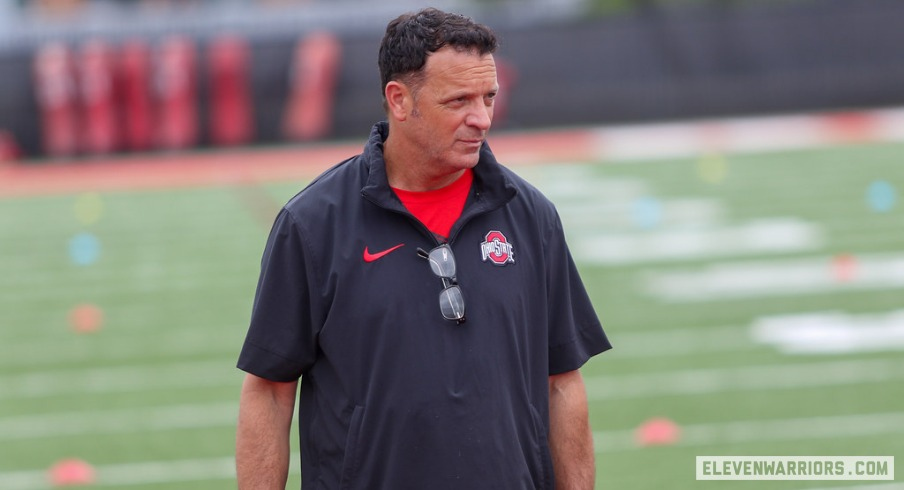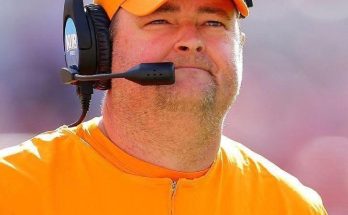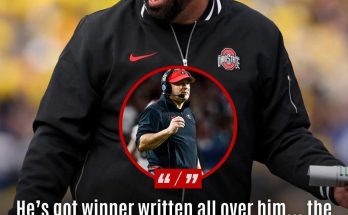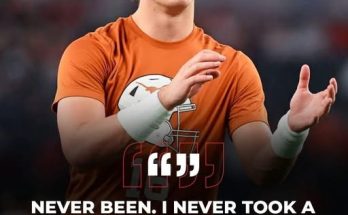In the world of college football, the movement of coaching staff and front office personnel is often just as impactful as the shuffling of athletes themselves. In an era where the margins between championship contenders and the rest are razor-thin, strategic hires behind the scenes can elevate a program’s performance, its recruiting power, and its national perception. Such is the case with Sam Petitto, the assistant athletic director of player personnel at Ohio State, who is departing from Columbus to take on a critical role at Louisiana State University (LSU) as director of scouting and personnel strategy. This move not only signals a significant shift for both powerhouse programs but also reflects the growing importance of executive talent in the broader landscape of college athletics.
Sam Petitto’s departure from Ohio State is not a casual personnel change. He has been a central figure in the Buckeyes’ recruiting strategy, helping to orchestrate classes that consistently ranked among the best in the nation. At a school where the pressure to win never subsides, Petitto’s deep knowledge of player evaluation, development projection, and roster management proved invaluable. His understanding of the complex machinery behind recruiting pipelines, high school networks, and scouting databases positioned him as a quiet architect of Ohio State’s recent success.
Petitto joined Ohio State with a background that brought both SEC experience and a reputation as a relentless evaluator. His eye for talent extended beyond highlight reels and five-star ratings. It included a deep understanding of character, fit, and upside. His commitment to the developmental aspect of recruiting was evident in his belief that a three-star prospect with the right mentality could become an All-American under the right conditions. At Ohio State, where NFL-caliber talent is the expectation rather than the exception, Petitto’s instincts and strategic input often served as a guiding compass for the program’s future roster construction.
LSU’s decision to bring him in as director of scouting and personnel strategy underscores the school’s ambitions. In the SEC, where Alabama, Georgia, and now Texas and Oklahoma are perennial recruiting juggernauts, LSU is seeking every possible edge. Petitto’s hire is a statement of intent. It shows that LSU is not content to compete at the level it has in recent years. It wants to dominate. By bringing in a proven evaluator from a Big Ten rival and inserting him into the fabric of its recruiting operation, LSU is bolstering both its talent acquisition strategy and its internal evaluation processes.
What makes Petitto’s move particularly intriguing is the structural shift in the college football ecosystem. The transfer portal, NIL (Name, Image, and Likeness) policies, and increasingly complex NCAA guidelines have transformed roster management into a delicate balancing act. Programs must now not only scout and secure high school recruits, but also manage portal entries, assess fit from players coming in from other schools, and maintain harmony in the locker room amid a new era of athlete empowerment. Petitto’s skill set aligns perfectly with these modern challenges. He understands how to construct a roster not only for short-term competitiveness but also for long-term sustainability. His expertise in data-driven evaluation methods and his relationships with high school coaches and recruiting analysts across the country will be invaluable to LSU as it charts its course in this new terrain.
Ohio State, for its part, will keenly feel Petitto’s absence. Losing a mind like his in the middle of the recruiting calendar can create momentary disarray, and his departure may influence some ongoing recruitment efforts. While the Buckeyes boast one of the deepest and most experienced personnel staffs in the country, continuity is often key in building relationships with prospects. A sudden change, especially one involving someone as intimately involved as Petitto, can create uncertainty. It may even open a brief window of opportunity for rival programs looking to flip commitments or plant seeds of doubt in the minds of targeted recruits.
The nature of Petitto’s role also means he often operated behind the scenes, away from the spotlight. Fans may not recognize his name in the way they would a head coach or star quarterback, but insiders understand his impact. Recruiting is not merely about salesmanship—it is about planning, timing, psychology, and foresight. It is about knowing when to press on a prospect, when to fall back, when to offer a scholarship, and when to wait. It’s also about understanding the ever-shifting sands of coaching staffs and how relationships at the high school and grassroots level influence decision-making. Petitto excelled in all these areas. His ability to synthesize information from coaches, scouts, analysts, and tape, and distill it into actionable insights gave Ohio State a major advantage.
At LSU, his responsibilities will likely expand beyond traditional scouting. The addition of “personnel strategy” to his title hints at a broader mandate. He may be tasked with overseeing the integration of analytics into recruiting decisions, advising the coaching staff on portal strategy, or even contributing to NIL-related roster planning. LSU’s recognition of the importance of such a position is forward-thinking. In today’s climate, the success of a football program is increasingly tied to its infrastructure. Talent alone no longer wins championships—program alignment, efficient internal communication, and a unified vision from top to bottom are critical. Petitto is being brought in to help construct that vision.
This is not the first time Petitto has made waves in the recruiting world. His stints in various roles across the SEC gave him a front-row seat to how championship programs operate. His familiarity with SEC country—particularly the fertile recruiting grounds of Louisiana, Georgia, Florida, and Texas—gives LSU a recruiter who understands the region’s nuances. He has a deep Rolodex and a reputation for professionalism and follow-through that resonates with high school coaches and athletes alike. That’s invaluable in a recruiting landscape where relationships matter just as much as facilities or tradition.
The timing of this move is also worth noting. With the 2025 recruiting class entering a critical stretch and summer evaluations underway, LSU is positioning itself to make a major push. Bringing in Petitto now allows him to shape the final months of this cycle while preparing a strategic overhaul for 2026 and beyond. His influence will likely be seen in the types of prospects LSU begins targeting, the methods used to evaluate them, and the messaging the program presents to families during visits. His blueprint will help shape LSU’s competitive identity moving forward.
For Ohio State, the task now becomes one of transition. The program must identify a replacement who can match Petitto’s expertise and seamlessly step into an evolving recruiting machine. The Buckeyes have shown resilience in the past, bouncing back from key staff losses, but every departure carries its own ripple effects. In a sport defined by inches and seconds, the departure of a trusted talent evaluator could tip the balance ever so slightly. Whether Ohio State can maintain its recruiting dominance in the post-Petitto era remains to be seen, but there’s no doubt that his fingerprints will linger on the roster for seasons to come.
Ultimately, Sam Petitto’s move is a reminder of how much college football has changed. The days when assistant coaches and on-field performance alone dictated success are gone. Behind every elite program is a network of personnel experts, analysts, strategists, and scouts who operate in the shadows but play vital roles in every win. Petitto’s rise is a testament to that reality. His journey from staffer to strategic leader illustrates how valuable off-field minds have become. LSU’s gain is Ohio State’s loss, and the reverberations of this move may be felt on Saturdays for years. As the battle for supremacy continues across college football, it’s not just the players and coaches on the field who will decide the future—it’s also the brilliant minds reshaping how rosters are built, how talent is evaluated, and how programs stay one step ahead in the most competitive sport in America.



